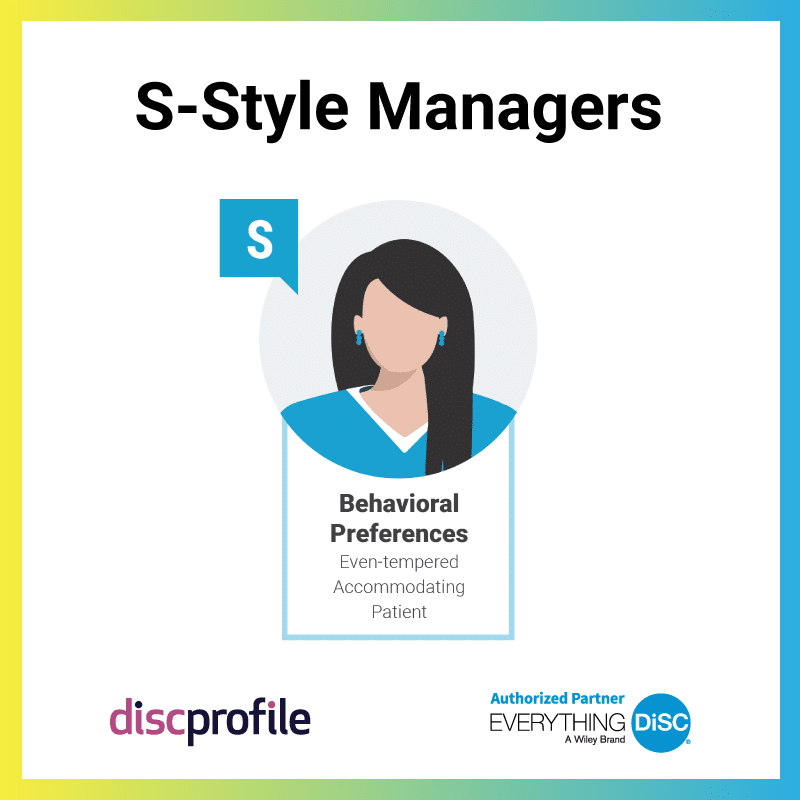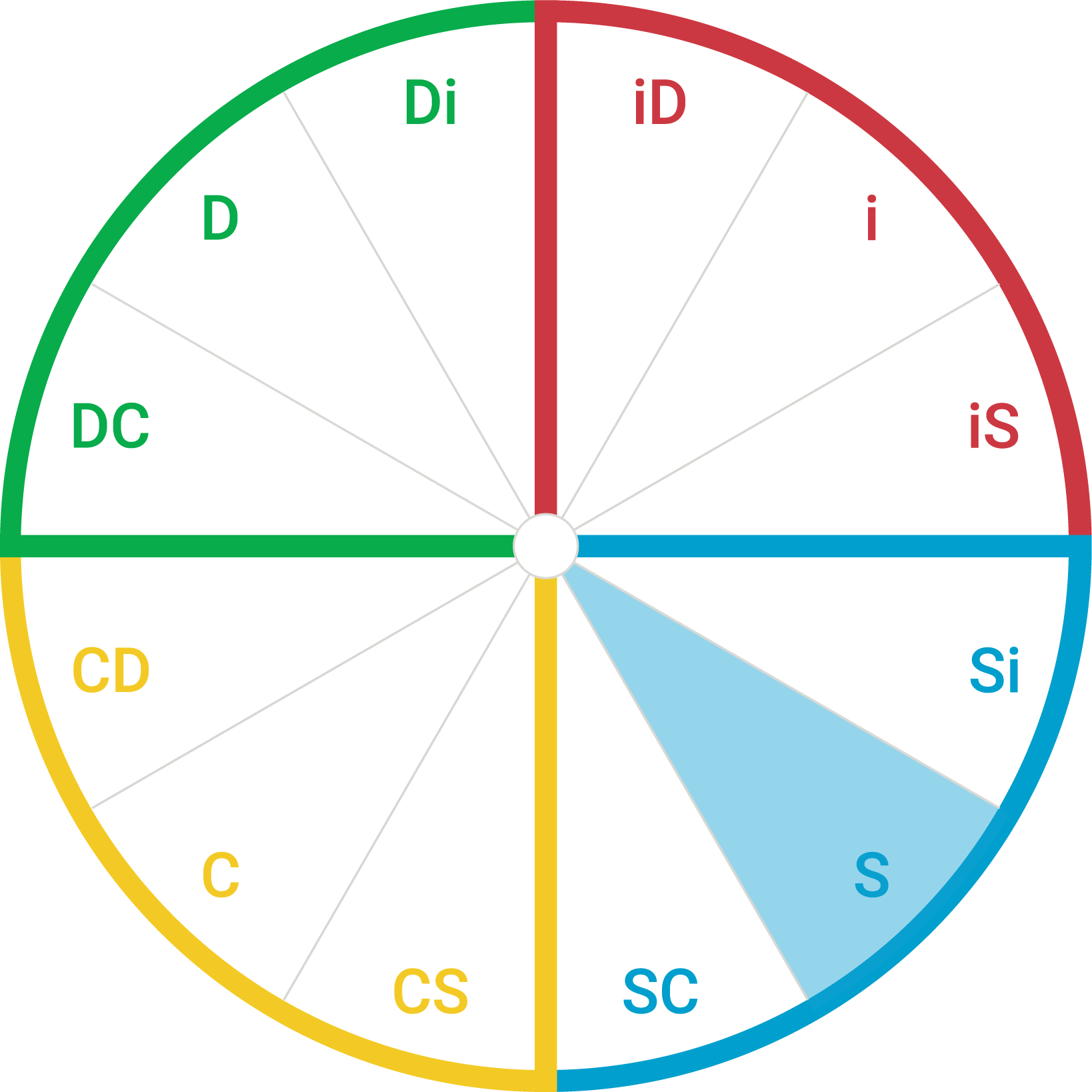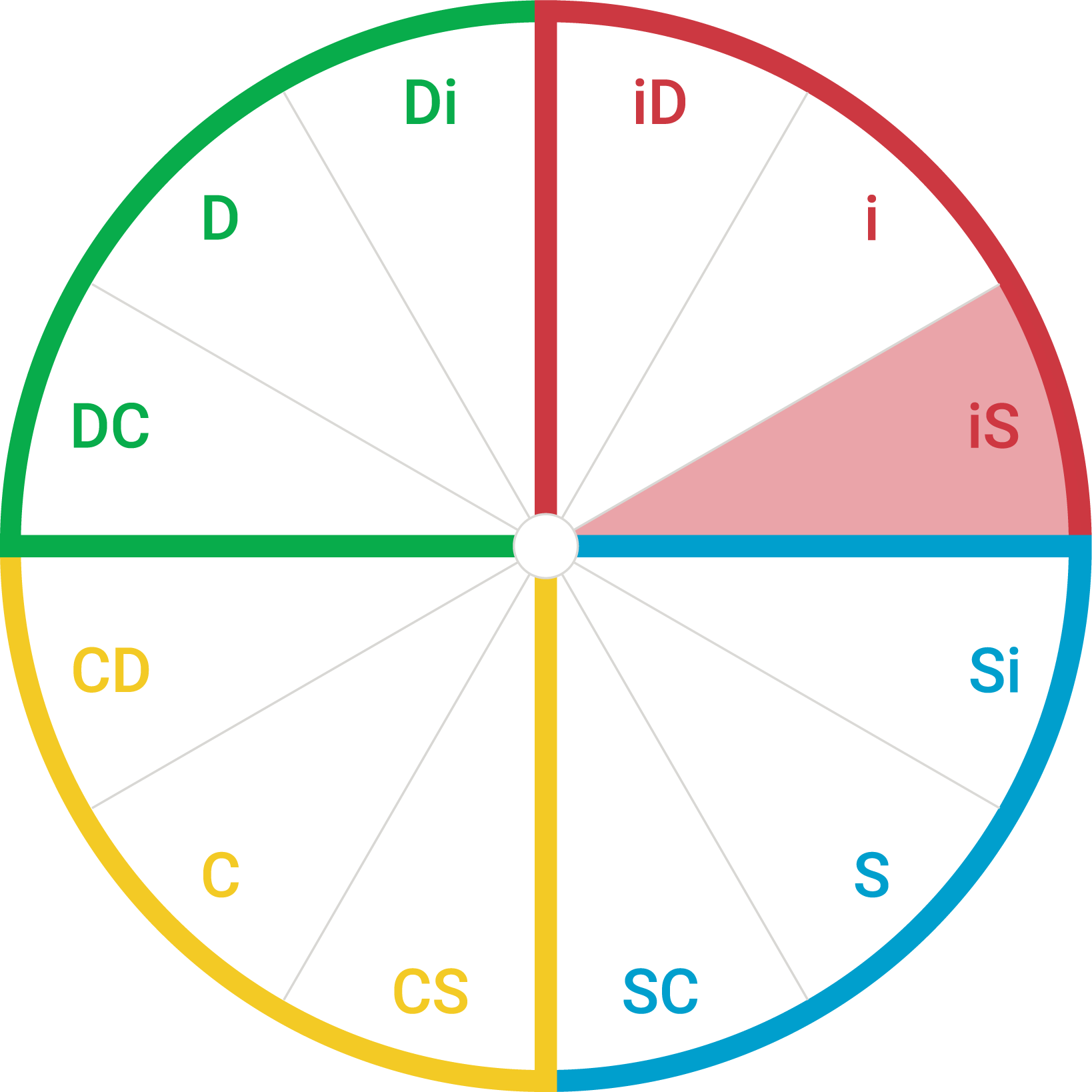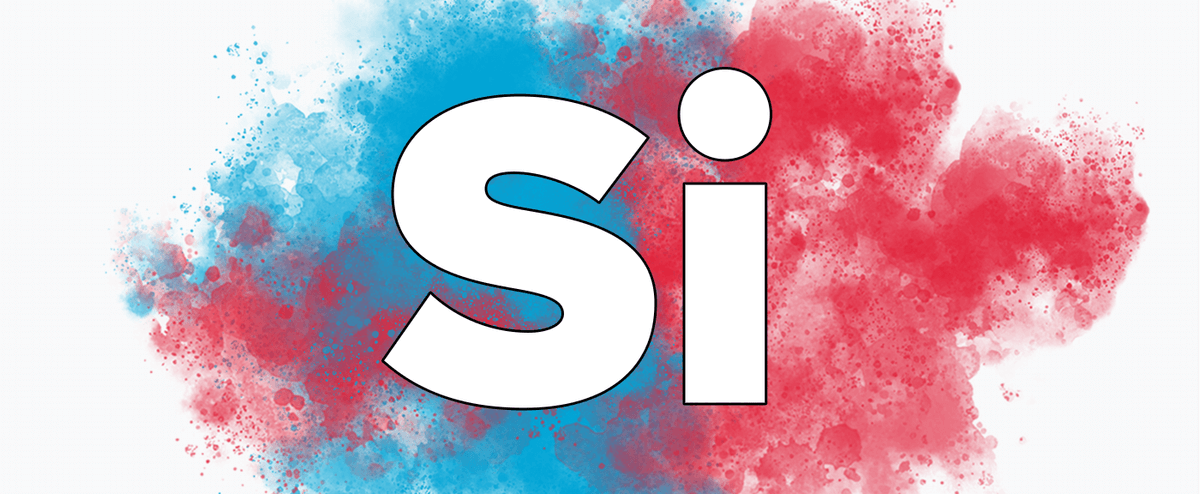
Si style
People whose DiSC profile shows an Si style are friendly, upbeat, and warm-hearted. They enjoy collaboration and go out of their way to make others feel comfortable and included.
What do the ‘S’ and the ‘i’ in DiSC mean?
The S in the Everything DiSC® model stands for steadiness. The i stands for influence. People whose DiSC profile shows an Si style display both the steadiness of the S style and the influence of the i style. You can recognize people with Si styles by their cheerful and agreeable demeanor, patience and empathy with others, and focus on creating a positive team experience.
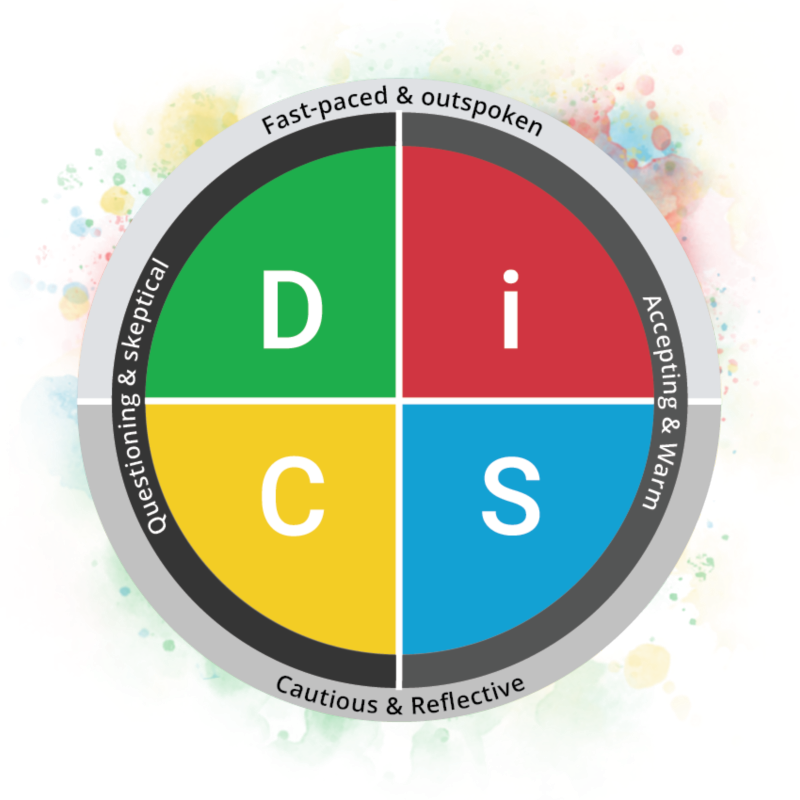
What is a DiSC style blend?
Every person embodies a mixture of all DiSC styles, but one or two styles will be most prominent. Some individuals' DiSC assessment results show a one-letter style (D, i, S, or C), and others show a style with two letters (Si, SC, CD, etc.).
These two-letter styles are style blends, indicating a personality type that falls near the border between two of the four main quadrants. These folks probably show traits associated with both styles. Thus, S styles often share characteristics with the i or C styles.
Everything DiSC assessment takers can see this clearly in their results by looking at where their dot is placed on the DiSC map. People with the Si blended style will notice that their dot is in the S quadrant, close to the i quadrant.
With its twelve-style model, the Everything DiSC test is calibrated to provide deeper and more personalized insights than assessments limited to four styles.

Dot placement
Human personality varies widely, even among people of the same DiSC style. Your dot placement on the Everything DiSC map in your profile can help you discover more about your unique personality.
For example, people with Si styles share many traits, but each Si-style person exhibits the style differently. You might be strongly inclined to the Si style with your dot appearing on the far edge of the circle and between the S and i lines. Or you might be slightly inclined toward the style, with your dot appearing closer to the middle of the circle.
Learn more: DiSC dot and priorities explained
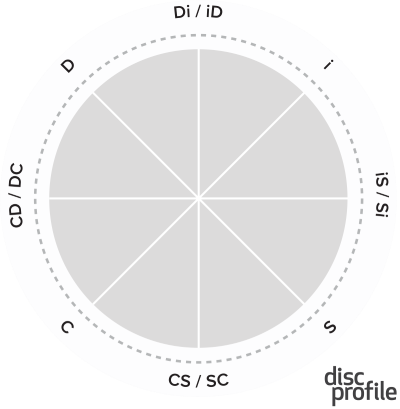
How do you get typed as an Si style in DiSC?
The DiSC model, at its foundation, measures:
- pace (from fast-paced and outspoken to cautious and reflective)
- agreeableness (from questioning and skeptical to accepting and warm)
Where you fall on these two scales will place you into one of the four primary DiSC quadrants.
However, this is only a starting place for the Everything DiSC profile. The assessment uses eight scales for a much more detailed report.
People with the Si style score highest on the iS/Si scale. This scale measures a positive, empathetic disposition using items such as, “I am naturally upbeat” and “I tend to see the best in people.” Further, the responses of Si-style people show tendencies slightly more in line with the S style than the i style. S-style folks are often even-tempered, patient, and humble. People with i styles are probably outgoing, enthusiastic, and optimistic. Si styles are a blend of the two.
Everything DiSC tells you not only your main DiSC style (D, i, S, or C) but which of the 12 style blends best represents you. It also tells you how strongly you align with those traits, and whether you have extra priorities more typical of other styles.
Why is the i in Si lowercase?
The small i in DiSC helps distinguish Everything DiSC® and DiSC® Classic products from other assessments based on the DISC model. Learn what makes Everything DiSC different.
Si-style managers
Like others with S styles, Si managers tend to look for stability and prefer an orderly, peaceful environment. They enjoy boosting team spirit, and creating an environment where everyone feels comfortable sharing and getting involved.
Looking for more information on common traits of Si-style managers? Read more about DiSC management styles.
